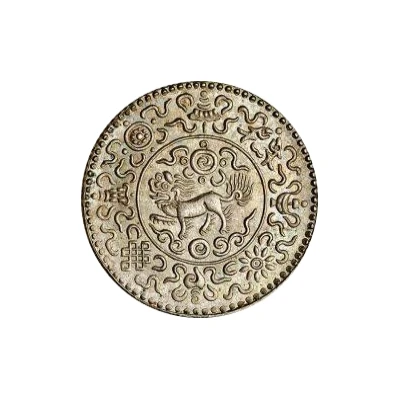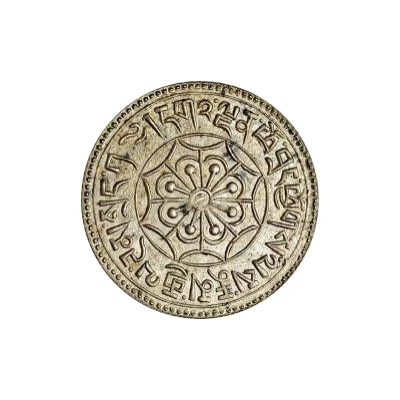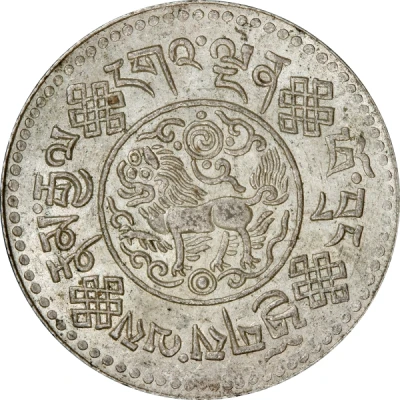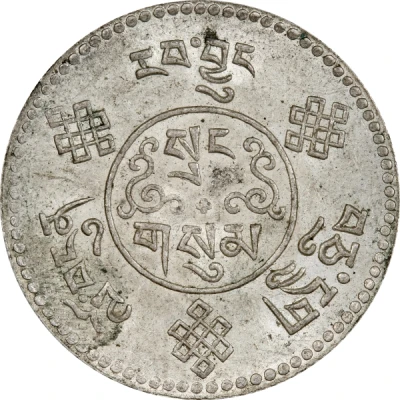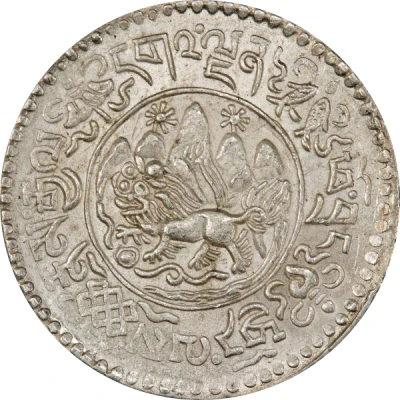
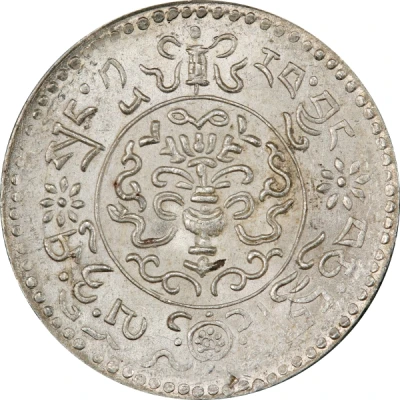

© PCGS
1½ Srang
| Silver | 5.00 g | 24 mm |
| Issuer | Tibet (China) |
|---|---|
| Period | Ganden Phodrang (1642-1959) |
| Type | Standard circulation coin |
| Years | 10-20 (1936-1946) |
| Calendar | Tibetan (16th cycle) |
| Value | 1½ Srang (3⁄2) |
| Currency | Srang (1792-1959) |
| Composition | Silver |
| Weight | 5.00 g |
| Diameter | 24 mm |
| Thickness | 1.5 mm |
| Shape | Round |
| Technique | Milled |
| Orientation | Medal alignment ↑↑ |
| Demonetized | Yes |
| Updated | 2024-10-04 |
| Numista | N#21438 |
|---|---|
| Rarity index | 56% |
Reverse
Treasure vase (a Buddhist auspicious symbol) containing foliage with scroll ornaments around, all surrounded three Buddhist auspicious symbols (a victory banner, a dharma wheel, and a lotus flower) and Tibetan characters.
Script: Tibetan
Lettering: རབ་བྱུང་ བཅུ་དྲུག་ལོ་ ལོ་ ཉིཤུ་ སྲང་ ༡༥
Translation:
rab byung bcu drug lo nyi shu srang 1/5
Cycle sixteen, Year twenty, 1-1/2 Srang
Edge
Reeded.
Interesting fact
One interesting fact about the 1½ Srang 10-20 coin from Tibet (China) made of Silver is that it features a unique blend of Tibetan and Chinese design elements. The obverse side of the coin depicts a portrait of the 13th Dalai Lama, while the reverse side features the Tibetan mantra "Om Mani Padme Hum" surrounded by a wreath of silver rupees. This blend of Tibetan spirituality and Chinese currency reflects the complex political and cultural relationship between Tibet and China during the time period in which the coin was minted.
Price
| Date | Mintage | VG | F | VF | XF | AU | UNC |
|---|---|---|---|---|---|---|---|
| 11 (1937) | - | - | - | - | - | - |
Values in the table are based on evaluations by sales realized on Internet platforms. They serve as an indication only for 1½ Srang 10-20 (1936-1946) coin.
